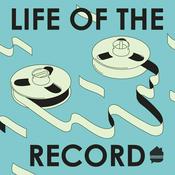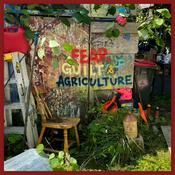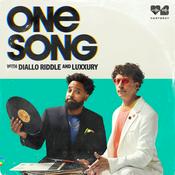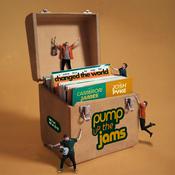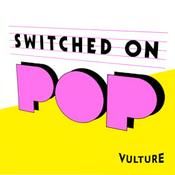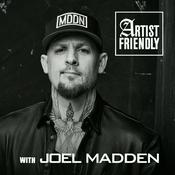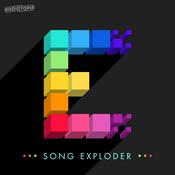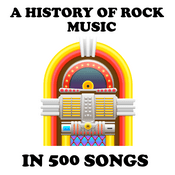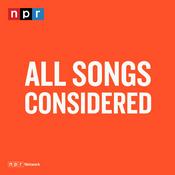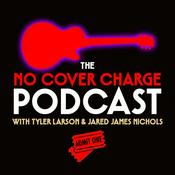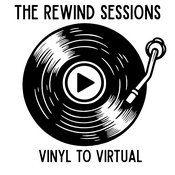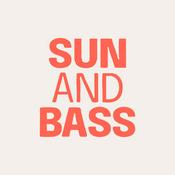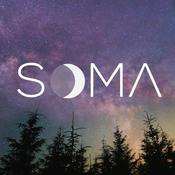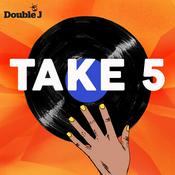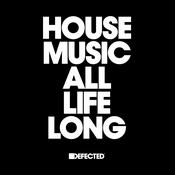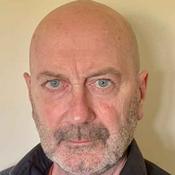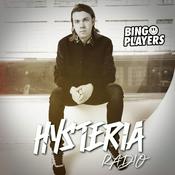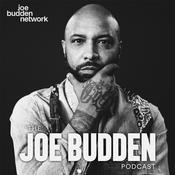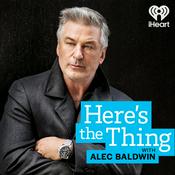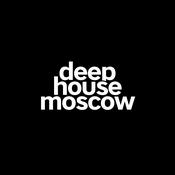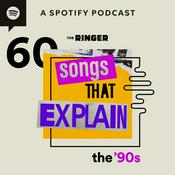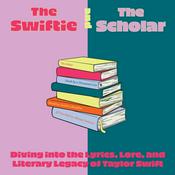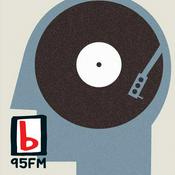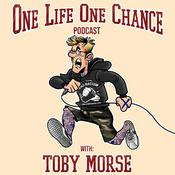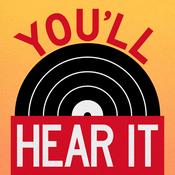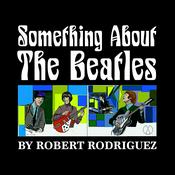109 episodes
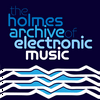
Merry Moog 2025 A Soundscape of Vintage Holiday Synthesizer Music
05/12/2025 | 1h 43 mins.
Episode 182 Merry Moog 2025 A Soundscape of Vintage Holiday Synthesizer Music Thanks for your patience while I’ve been producing podcast episodes for my book, the seventh edition of which will be released next year. I produced 62 of them and it diverted me from the regular episodes. However, a friend asked me if I was preparing the holiday episode and that’s exactly what I’ve done. This is my annual holiday podcast. The purpose of which is to play synthesizer-based holiday tunes from the ages—from 1967 to the present day. This edition will be a little different than previous holiday episodes. Rather than play a set of individual, synthesizer-based tunes on the holiday theme, I decided to put together a soundscape that integrates the holiday music, mostly in short excerpts and mixed in various ways, along with an audio environment made up of shortwave radio sounds and broadcasts. There is something about the global appeal of holiday music that fits with the theme of universal shortwave sounds, sounds that know no borders. If you listen carefully, you will hear many of the holiday tunes that I usually stack up in these editions. I try to garner the most representative themes from each yet provide a soundscape that you can sit back and relax to while doing other things this holiday season. There are literally dozens of tracks represented in this episode, each with its own distinctive sound imprint. Jean Jacques Perrey, Douglas Leedy, Hans Wurman, Joseph Byrd, The Moog Machine, Emerson Lake and Palmer, Greg Lake, Taeko Onuki, the Joy Electric, Bernie Krause, The Star Wars Christmas album, The Smurfs Christmas album, the Romantic Synthesizer, Armen Ra, Don Voegeli, The Roots, and Paul Tanner. Among others. I also threw in a decidedly not electronic track by Ron Sexsmith, one of my favorite songwriters. It is lurking the mix, too. So have a happy holiday and I wish you healthy and wondrous listening for the new year. Opening and closing sequences voiced by Anne Benkovitz. Additional opening, closing, and other incidental music by Thom Holmes. My Books/eBooks: Electronic and Experimental Music, sixth edition, Routledge 2020. Also, Sound Art: Concepts and Practices, first edition, Routledge 2022. See my companion blog that I write for the Bob Moog Foundation. For a transcript, please see my blog, Noise and Notations. Original music by Thom Holmes can be found on iTunes and Bandcamp.

Artificial Intelligence and Electronic Music
29/9/2025 | 1h 31 mins.
Episode 181 Artificial Intelligence and Electronic Music Playlist Time Track Time Start Introduction 05:42 00.00 1. Cornelius Cardew, “Treatise: String Orchestra (2025). The first of three AI interpretations of a piece by Cardew composed between 1963 and 1967. The work was written as a graphic score. Produced by the team of Professor Shlomo Dubnov of the University of California at San Diego, they used as the basis for an improvisation Cardew’s graphical musical score comprising 193 pages of lines, symbols, and various geometric or abstract shapes that largely stray from conventional musical notation (pages 1 to 33 were used). The recordings from Dubnov’s team interpreted this graphic score with the help of Open AI’s ChatGPT 40 and a program they developed themselves called Music Latent Diffusion Model (MusicLDM), an AI-like algorithm. The recordings show how AI can transform visual stimuli into sound and expand on their interpretation in an experimental music composition. This version is arranged for digital string orchestra. 11:23 05:54 2. Cornelius Cardew, “Treatise” Sinewave” (2025). This version from Dubrov’s lab was arranged for sinewave generator. 11:15 17:10 3. Cornelius Cardew, “Treatise: Experimental” (2025). This version from Dubrov’s lab was arranged for a mix of instruments defined as “experimental” by the team. 11:32 28:24 4. Valérie Philippin, “Extraits de recherche” (2024). Vocal interaction experiment conducted with vocalist Valérie Philippin while she was in artistic residence at European Research Council REACH project (ERC) at IRCAM. AI interaction in real-time using the Somax2 program. Voice: Valérie Philippin, Somax2 & electronics: Mikhail Malt. 03:52 39:48 5. Horse Lords and The Who/Men, “Zero Degree Machine” (2023). Horse Lords Concert at ERC REACH. Music using Somax2 to interact with the performers and add new parts and instruments in real time. If you hear something other than a guitar, drums, bass, and sax, then it was created by Somax2. You might detect loops of instruments (e.g., saxophone) as well because Somax2 adds to the mix. Horse Lords (Max Eilbacher bass/electronics, Sam Haberman percussion, Owen Gardner guitar, Andrew Bernstein percussion/saxophone). The Who/Men: Gérard Assayag, Mikhail Malt, Reach interactive AI: Somax2; Marco Fiorini, Reach interactive AI: Somax2 and electric guitar; Manuel Poletti, computer music production at IRCAM). The Who/Men are providing guidance for Somax2 in real-time, operating different instances of the program on their laptops. 18:45 43:42 6. PintoCreation “AI-generated Sci-Fi Sci-Fi and Visual Storytelling” (2025). This is just an example of how task-specific AI is being used to generate videos with electronic music soundtracks. This is an excerpt from one of the soundtracks for the many videos they have generated for their YouTube channel. 07:54 01:02:26 7. Artificial Intelligence Music, “Melodic Techno” (2025). Excerpt of AI-generated techno music found on this YouTube site. They explain that the music found here “was composed by an AI, meticulously trained on the nuances of this captivating genre.’ I have no idea what AI engine was used, but this is just one example of how many music producers are getting onto the AI train. 06:51 01:10:17 8. Atmoscapia, “Calm Ambient” (2025). This is a purpose-built generative ambient music creator for “Films, Games, YouTube, and Creative Projects.” Billed as an “Instant Ambient Music Generator For Content Creators,” you use it by selecting styles and lengths up to an hour long. In this case, I chose the style “Calm, Meditative, Dreamy.” Two other categories are also provided for “Cinematic, Dramatic, Emotional” and “Dark, Horror, Suspense.” Those are the extent of the current choices in the free version. It delivers a soundtrack that you can download. 10:00 01:17:08 9. Thom Holmes, “Thom DeepAI Noise Music” (2025). In an attempt to generate something more experimental using an AI system, I turned to DeepAI and gave it the following instructions: “Experimental, noise sounds. No melody, no harmony, no rhythm. Randomized intervals of silence. Randomized mood swings.” It was short as I was not using the premium version, but it came closer than some other AI programs to creating a work that was more closely aligned with experimental. 1:45 01:41:49 Opening background music: Ambient music generated by the Atmoscapia AI system using the “Dark, Horror, Suspense” setting (excerpt). Introduction to the podcast voiced by Anne Benkovitz. Additional opening, closing, and other incidental music by Thom Holmes. My Books/eBooks: Electronic and Experimental Music, sixth edition, Routledge 2020. Also, Sound Art: Concepts and Practices, first edition, Routledge 2022. See my companion blog that I write for the Bob Moog Foundation. For a transcript, please see my blog, Noise and Notations. Original music by Thom Holmes can be found on iTunes and Bandcamp.

The 2025 US Open Sound Experiment
11/9/2025 | 1h 35 mins.
Episode 180 The 2025 US Open Sound Experiment Playlist The sounds for this episode are a collage many things including recorded sounds from the US Open, spectators, tennis players, chair umpires, and the general ambience of the grounds. Mixed in are modifications of various pop tunes plus my own sequnces of electronic sound. All intended to capture the rhythms, beats, and atmosphere of being at the US Open. Additional opening, closing, and other incidental music by Thom Holmes. My Books/eBooks: Electronic and Experimental Music, sixth edition, Routledge 2020. Also, Sound Art: Concepts and Practices, first edition, Routledge 2022. See my companion blog that I write for the Bob Moog Foundation. For a transcript, please see my blog, Noise and Notations. Original music by Thom Holmes can be found on iTunes and Bandcamp. Opening and closing sequences voiced by Anne Benkovitz.

Chapter 38, Eurorack
14/6/2025 | 1h 26 mins.
Episode 179 Chapter 38, Eurorack. Works Recommended from my book, Electronic and Experimental Music Welcome to the Archive of Electronic Music. This is Thom Holmes. This podcast is produced as a companion to my book, Electronic and Experimental Music, published by Routledge. Each of these episodes corresponds to a chapter in the text and an associated list of recommended works, also called Listen in the text. They provide listening examples of vintage electronic works featured in the text. The works themselves can be enjoyed without the book and I hope that they stand as a chronological survey of important works in the history of electronic music. Be sure to tune-in to other episodes of the podcast where we explore a wide range of electronic music in many styles and genres, all drawn from my archive of vintage recordings. There is a complete playlist for this episode on the website for the podcast. Let’s get started with the listening guide to Chapter 38, Eurorack from my book Electronic and Experimental music. Playlist: EURORACK SYNTHESIS Time Track Time Start Introduction –Thom Holmes 01:26 00:00 1. Kaitlyn Aurelia Smith, “Abstractions” (2018) from Electronic Series: Vol. 1 – Abstractions. Written, recorded and mixed by Kaitlyn Aurelia Smith. Inspired by Harry Everett Smith's "Early Abstractions" films. 21:49 01:36 2. Alessandro Cortini & Lawrence English, “Immediate Horizon, Part 1 (2018) from Immediate Horizon. Recorded live at Berlin Atonal, Kraftwerk 2015. 04:59 23:24 3. Lukas Hermann, “Amphibious” (2022). Improvisation for a Eurorack modular synthesizer. From Tone Science Module No. 6 (Protons And Neutrons). 05:51 28:24 4. James Bernard, “Prisms” (2022) from Tone Science Module No. 6 (Protons And Neutrons). Composed by James Bernard. Live performance recorded in one take using a small Eurorack modular system. 08:10 34:12 5. Elin Piel, “Vänta” (2022) Tone Science Module No. 6 (Protons And Neutrons). Composed by Elin Piel. Recorded live with Lyra 8, a small Eurorack system and Analog Heat. 06:59 42:18 6. Field Lines Cartographer, “Eddy Currents” (2022). Tone Science Module No. 6 (Protons And Neutrons). Composed by Field Lines Cartographer. Realised on ARP 2600 and Eurorack modular synths. 08:54 49:12 7. Elinch, “Upward” (2022). Tone Science Module No. 6 (Protons And Neutrons). Composed by Elinch. A live composition with a small modular system (Strega, TTMC, Disting Ex for Loops) and Buchla Easel Command. 07:28 57:58 8. Steve Roach, “Random Possibilities” (2022). Composed by Steve Roach. Performed and recorded in real time on Large Format Analog and Eurorack Modulars. 06:29 01:05:22 9. Ewa Justka, “for the gatekeepers” (2023) from don't you want followers? For “handmade synthesisers and contingent rabbit holes.” 07:22 01:11:44 10. Tunegirl, “Push the Button” (2023) from Eurorack Ruhr: Compilation # 2. Trance music with a Eurorack system. 06:19 01:19:04 Additional opening, closing, and other incidental music by Thom Holmes. My Books/eBooks: Electronic and Experimental Music, sixth edition, Routledge 2020. Also, Sound Art: Concepts and Practices, first edition, Routledge 2022. See my companion blog that I write for the Bob Moog Foundation. For a transcript, please see my blog, Noise and Notations. Original music by Thom Holmes can be found on iTunes and Bandcamp.

Chapter 37, Contemporary Software and Synthesis
14/6/2025 | 2h 8 mins.
Episode 178 Chapter 37, Contemporary Software and Synthesis. Works Recommended from my book, Electronic and Experimental Music Welcome to the Archive of Electronic Music. This is Thom Holmes. This podcast is produced as a companion to my book, Electronic and Experimental Music, published by Routledge. Each of these episodes corresponds to a chapter in the text and an associated list of recommended works, also called Listen in the text. They provide listening examples of vintage electronic works featured in the text. The works themselves can be enjoyed without the book and I hope that they stand as a chronological survey of important works in the history of electronic music. Be sure to tune-in to other episodes of the podcast where we explore a wide range of electronic music in many styles and genres, all drawn from my archive of vintage recordings. There is a complete playlist for this episode on the website for the podcast. Let’s get started with the listening guide to Chapter 37, Contemporary Software and Synthesis from my book Electronic and Experimental music. Playlist: CONTEMPORARY SOFTWARE AND SYNTHESIS Time Track Time Start Introduction –Thom Holmes 01:32 00:00 1. Barry Truax, “Sonic Landscapes No. 3” (1977 revision). From the album Sonic Landscapes: Electronic and Computer Music (Melbourne Records, Canada). “A spatial environment for four computer synthesized soundtracks.” 15:16 01:36 2. Robert Hood. “Spirit Levels” (1994) from Internal Empire. Written, performed, and produced by Robert Hood. 05:06 16:50 3. Ikue Mori, “Abacus—Blue Parrot” (1996) from Garden. Composed, performed, produced, drum Machines, effects, Ikue Mori. 10:57 10:57 21:56 4. Ghost, “Aramaic Barbarous Dawn” (2004) from Hypnotic Underworld. 03:15 32:52 5. Outputmessage (Bernard Farley), “REM State” (2004) from Oneiros. Written, performed, and produced by Bernard Farley. 04:33 36:08 6. TOKiMONSTA, “Let Me Trick You” (2010) from Cosmic Intoxication EP. Jennifer Lee is a producer from Los Angeles, California, USA. 03:27 40:40 7. TOKiMONSTA, “Line to Dot” (2010) from Cosmic Intoxication EP. Jennifer Lee is a producer from Los Angeles, California, USA. 02:50 44:06 8. Harold Budd, “Jane 1” (2014) from Jane 1-11. Composed, performed, produced by, Harold 07:42 47:00 9. Sophie, “Elle” (2013) from Bipp/Elle. Electronics, vocals, composed and performed by Sophie Xeon. Sophie was primarily known for electronica dance music. 03:39 54:42 10. William Basinski & Richard Chartier, “Divertissement” excerpt (2015). Composition and computer synthesis, Richard Chartier and William Basinski. 08:36 58:20 11. Thom Holmes, “Numbers” (2017) from Intervals. A composition using recordings of numbers stations as the primary source, combined with audio processing and software synthesis. 05:57 01:06:54 12. Ami Dang, “Conch and Crow” (2019) from Parted Plains. Sitar, electronics, audio processing, voice, Ami Dang. 06:00 01:12:50 13. Jeff Mills, “Canis Major Overdensity” (2020) from The Universe: Galaxy 1. Written, performed, and produced by Jeff Mills. 07:42 01:18:48 14. Pamela Z, “Ink” (2021). Commissioned and presented by VOLTI, artistic director Robert Geary; executive producer Barbara Heroux; performed by VOLTI. Music by Pamela Z. 18:08 01:26:32 15. Ryuichi Sakamoto, “20220214” (2022) from 12. Composed, produced, performed by Ryuichi Sakamoto. In answer to a question about how these recordings were done, Sakamoto replied: “They were all recorded in the small studio that was in my temporary abode in Tokyo. Depending on the piece, two or four mics were used to record the piano.” 09:10 01:44:38 16. QOA (Nina Corti), “Sauco” (2022) (04:22), “Liquen” (2022) (02:50), “Yatei” (2022) (03:04), “Muitu” (2022) (03:16) from SAUCO. Side 1 of this release from this Argentinian composer-performer. “Sonic journey crafted to cultivate poetic gestures amidst Fauna, Flora, Fungi, Mineral Waters, Wind, and Earth. Each track is an exploration of sound's constant transformation, akin to dragonfly particles swimming in the air. Like waves occupying a space in the spectrum, the compositions work with the movement, condensation, and lightness of the air.” 13:33 01:53:50 Additional opening, closing, and other incidental music by Thom Holmes. My Books/eBooks: Electronic and Experimental Music, sixth edition, Routledge 2020. Also, Sound Art: Concepts and Practices, first edition, Routledge 2022. See my companion blog that I write for the Bob Moog Foundation. For a transcript, please see my blog, Noise and Notations. Original music by Thom Holmes can be found on iTunes and Bandcamp.
More Music podcasts
Trending Music podcasts
About The Holmes Archive of Electronic Music
Listen to The Holmes Archive of Electronic Music, Life of the Record and many other podcasts from around the world with the radio.net app

Get the free radio.net app
- Stations and podcasts to bookmark
- Stream via Wi-Fi or Bluetooth
- Supports Carplay & Android Auto
- Many other app features
Get the free radio.net app
- Stations and podcasts to bookmark
- Stream via Wi-Fi or Bluetooth
- Supports Carplay & Android Auto
- Many other app features
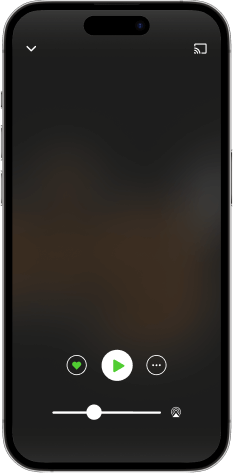

The Holmes Archive of Electronic Music
download the app,
start listening.
